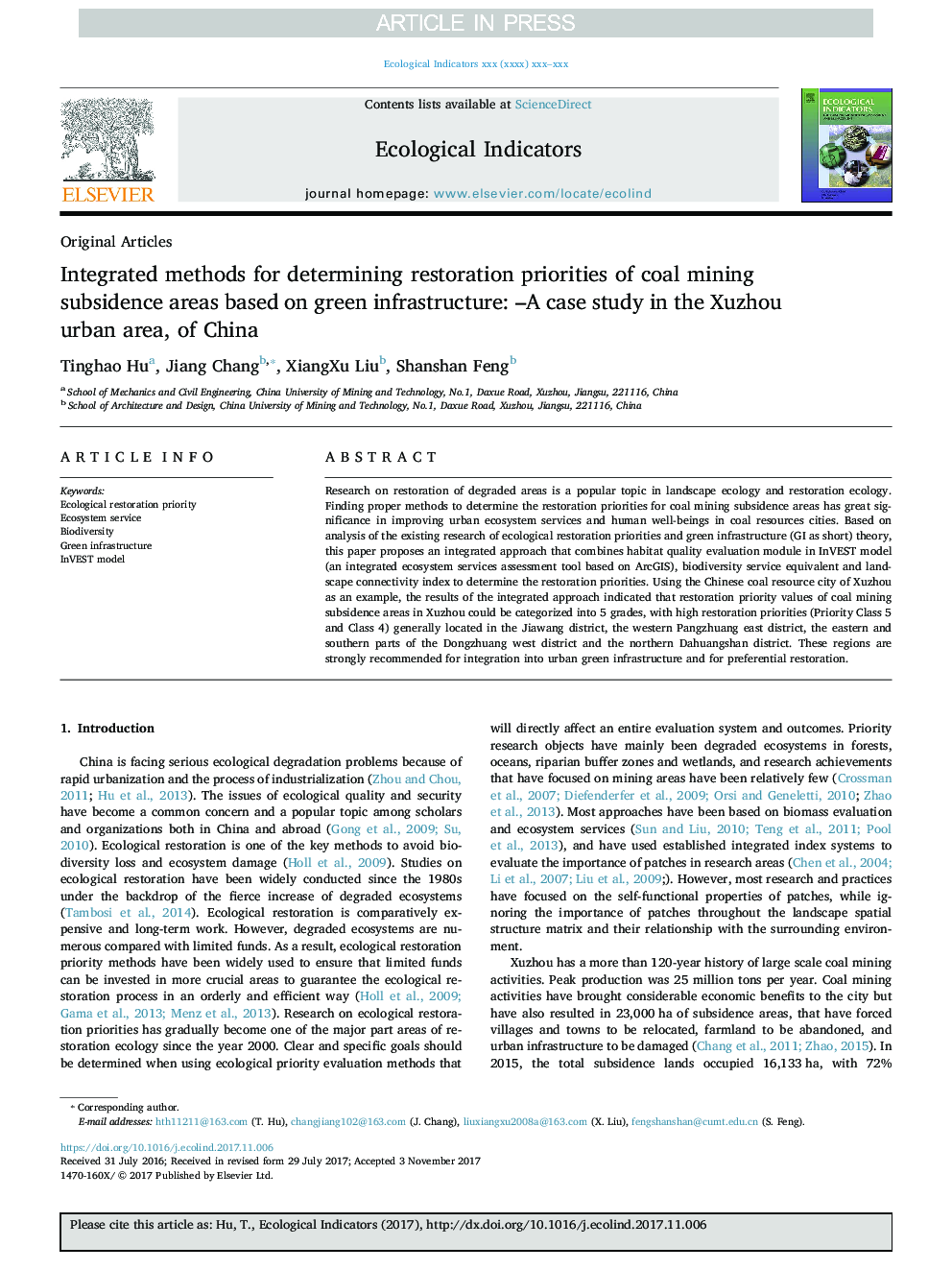| Article ID | Journal | Published Year | Pages | File Type |
|---|---|---|---|---|
| 10223307 | Ecological Indicators | 2018 | 11 Pages |
Abstract
Research on restoration of degraded areas is a popular topic in landscape ecology and restoration ecology. Finding proper methods to determine the restoration priorities for coal mining subsidence areas has great significance in improving urban ecosystem services and human well-beings in coal resources cities. Based on analysis of the existing research of ecological restoration priorities and green infrastructure (GI as short) theory, this paper proposes an integrated approach that combines habitat quality evaluation module in InVEST model (an integrated ecosystem services assessment tool based on ArcGIS), biodiversity service equivalent and landscape connectivity index to determine the restoration priorities. Using the Chinese coal resource city of Xuzhou as an example, the results of the integrated approach indicated that restoration priority values of coal mining subsidence areas in Xuzhou could be categorized into 5 grades, with high restoration priorities (Priority Class 5 and Class 4) generally located in the Jiawang district, the western Pangzhuang east district, the eastern and southern parts of the Dongzhuang west district and the northern Dahuangshan district. These regions are strongly recommended for integration into urban green infrastructure and for preferential restoration.
Related Topics
Life Sciences
Agricultural and Biological Sciences
Ecology, Evolution, Behavior and Systematics
Authors
Tinghao Hu, Jiang Chang, XiangXu Liu, Shanshan Feng,
